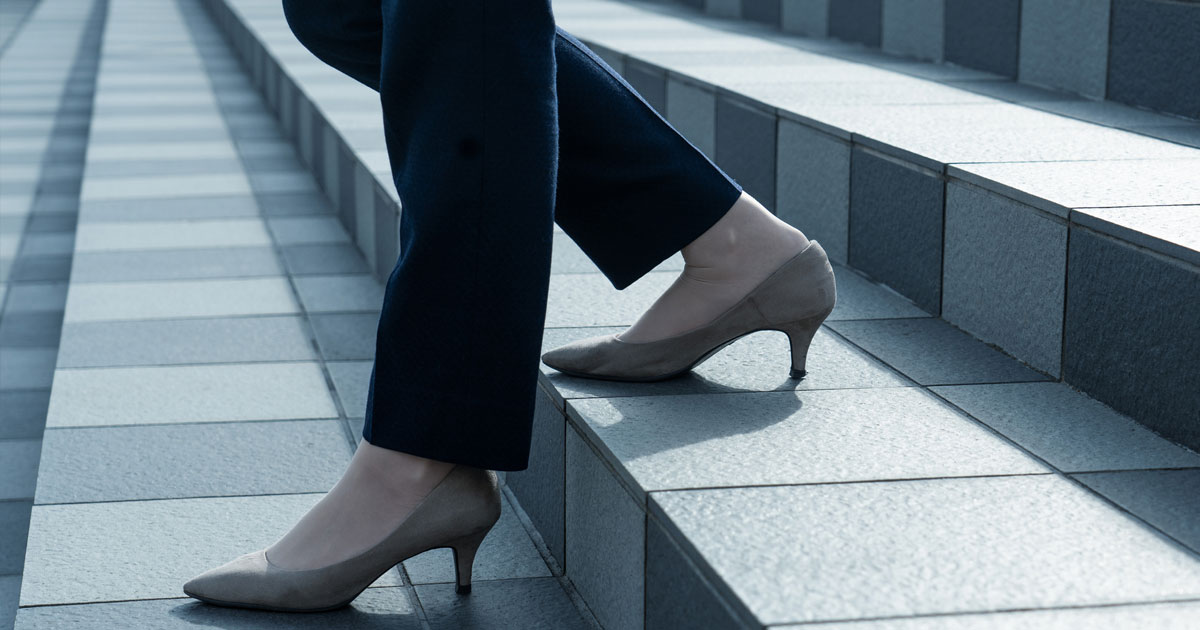Attending a family court hearing in Arizona comes with its own set of expectations and best practices. For example, adequate preparation, submitting all documents complete and on time, maintaining transparency with the court, and arriving at court on time are key ways to adhere to the court’s expectations. Following these protocols can help you ensure you experience the best possible chances for success in your case.
One question that often goes unanswered, however, is: “How should I dress for court?” Let the Valley Law Group’s decades of experience in the Arizona family court system be your guide as you develop a strategy for not only finding success in the courtroom but also looking the part.
What Are Arizona’s Family Courtroom Dress Code Expectations?
Arizona has established a code of conduct for visitors to state courtrooms. First and foremost, the courtroom should be treated as an important office and a place of business where critical matters are carried out. As with many other businesses, the family court has developed its own dress code.
The Arizona Family Court dress code begins with a single basic rule: visitors must dress appropriately. To that end, the court recommends professional business dress when the court is in session, though the state does not require formal attire. The code states that clothing should be clean and in good condition. You are, at minimum, required to wear a shirt and shoes in the courtroom, but you should dress as professionally as possible if your goal is to win your case.
Clothing should generally be free of stains and spots, and without holes or tears. Wash and iron your clothes the night before to make sure you have time to dress properly and locate the necessary items. In addition, cutting any loose strings with scissors can make a big difference in the appearance of your overall outfit.
Clothing Items That Are Inappropriate for Family Court Hearing
Just as important as the short list of clothing items the court requires are the many items you should not wear to court. For example, you should always remove your hat before entering a courtroom and hold it by your side until you are seated, when you may place it in the seat next to you. It’s important to note that wearing inappropriate items of clothing in front of a judge may not only place you in violation of the court’s dress code but can devalue your reputation and your case.
Some of the items you should never wear to court are listed below:
- Hats
- Shorts
- Flip flops
- T-shirts
- Baggy or sagging pants that display undergarments
- Pants that are too long
- Athletic wear
- Crop tops
- Torn, ripped, or tattered clothing, even pants designed to feature rips and shreds
- Mini skirts or any skirt or dress with a hem above the knee
- Sheer or see-through clothing
- Clothing that is otherwise sexual in nature
- Tank tops or sleeveless shirts
- Tight clothing
- Tennis shoes
- Strapless dresses or sundresses without a sweater or covering
- Sunglasses
- Clothing or accessories displaying inappropriate words, phrases, pictures, or language
What Should I Wear to Family Court?
When attending family court hearings, as with other criminal and civil courts, it is advisable to dress professionally. Of course, this can look different depending on how you present and even your goals in court. Here are the suggested minimum guidelines for both men and women.
Court Attire: Minimum Guidelines for Men

For men, business attire is preferred, but business casual is better than everyday attire. For example, while business attire like a shirt and tie or suit is preferred, a polo shirt with khaki or dress pants and leather shoes is much better than jeans, tennis shoes, and a pocket tee.
Men’s Tops
A collared shirt is always preferable to a non-collared shirt. If you can, wear a sports coat, collared dress shirt, and tie. A full, matching suit is ideal. In addition, always tuck in your shirt and wear a belt. Avoid clothing that displays large name brands or showy graphics.
Men’s Pants
Dress pants should fit properly and be neatly hemmed at the shoe. Pant legs that drag on the ground or fall under your shoe when you step will look sloppy and disheveled. Ideally, pant leg hems should sit between the ankle line and above the top of the heel of the shoe—not too short and not too long.
Men’s Shoes and Accessories
Make sure your shoes are properly tied and clean. Simple accessories can make you look even better. Some examples of simple accessories include a tie clip, cufflinks, a pocket square, collar clip, suspenders, and a belt.
Court Attire: Minimum Guidelines for Women

Like men, women should strive for business attire. In general, dresses that are suitable for the office, not a cocktail party, are preferred. In a pinch, full-length business pants or skirts with a professional top are acceptable.
Women’s Dresses
For women, a plain, sleeved dress is recommended. Dresses should not be too form-fitting, too short, or too revealing. A sweater or cardigan can tone down a dress if it seems too “evening.”
Women’s Bottoms
If wearing a dress is not an option, a long skirt or business-style slacks or pants will work. The hems of pants, dresses, and skirts should be neat and lay at a proper height—not too short, yet not too long. Pants should be full-length, not capri or cropped, while skirts should be at or below the knee.
Women’s Shirts
As mentioned, sleeveless dresses should be topped with a sweater, cardigan, or blazer. If a dress is not possible, any shirt should have sleeves. Collared shirts with a modest neckline are a must, whether paired with pants or a skirt.
Women’s Shoes and Accessories
Dress shoes or heels are a must, regardless of whether they are paired with a skirt or pants. Any accessories should not be too flashy or outlandish. Jewelry such as earrings, necklaces, and bracelets should be kept to a minimum, and only simple styles should be worn.
So, How Should I Dress to Win a Court Case?
Of course, appearing in court is one thing, but if you want to have the best chance at winning your court case, you should dress your absolute best. Here are some additional tips for really dressing to impress in the courtroom by wearing the most powerful ensemble possible: the power suit.
Power suits are ideal for both men and women, as they are conservative yet bold enough to make a strong, professional statement. These suits exude confidence and class. Regardless of gender, a power suit is typically dark blue or charcoal in color without patterns or texture.
Power Suits for Men

For men, the collared shirt underneath should be solid in color or have subtle stripes. The suit should be well-tailored to fit properly. A power suit should always feature a tie, which should be solid, striped silk, or dotted in a bold shade of a primary color (red is usually best). Add classic cufflinks and a belt or suspenders to complete the look.
Power Suits for Women

For women, a power suit is all about the cut. Avoid cropped legs or skinny-style pants; a safer option is high-rise trousers with flared or wide legs. As previously mentioned, hemlines shouldn’t be too long or too short and should fall near the bottom of the ankle but above the foot. If you’re having trouble finding the correct fit, longer is better, as hemlines that fall too short can look like a bad fit. Flared pants can be hemmed to cover the top of your foot and still look professional.
A women’s blazer should fall right at the hip. Unlike men, women need not button blouses to the neck and wear a tie, but it is recommended to avoid leaving more than the top button unbuttoned when attending court. Pumps are the best option for footwear, as they make for a classic look that gives off an air of no-nonsense responsibility.
Grooming, Hair, and Cosmetics for Court
While the clothing you wear to family court can be crucial for establishing your reputation to the judge, your grooming, hair, cosmetics, and other choices you make can be just as important.Personal Hygiene
Your personal hygiene is a critical component of your appearance, and it should be a consideration when appearing in court. Before you go to court, take a shower and take time to perform your regular grooming routine. While you should be careful not to overdo the cologne or perfume, do remember to wear deodorant. It can get stuffy in the courtroom after a while, especially when you’re wearing a full suit. Also, bring breath mints in case nerves make your mouth dry.
How Should I Wear My Hair for Court?
When attending court, you should approach your hairstyle in the same manner you do for your clothing: simple and professional is best.
Clean-cut styles are ideal for men. This means neatly trimmed hair that is clean and combed is recommended. Take time to shave or neatly trim any facial hair.
For women, a ponytail that is neatly brushed or pulled back and pinned is preferred. In addition, make sure your hair doesn’t cover your face because it can make you look untrustworthy. In a courtroom, everyone is watching.
Finally, avoid hair that has been dyed in an unnatural color, such as blue or pink. The goal here is to avoid attracting unnecessary or unfavorable attention in court – self-expression has no place in a courtroom.
Wearing Cosmetics in Court
Makeup is fine as long as you present yourself as clean and reserved. Light makeup that represents a natural look is best. By contrast, avoid false eyelashes, bright lipstick, or over-exaggerated contouring.
For both men and women, well-groomed, short nails are ideal. Women should not plan to wear long, brightly colored acrylic nails to court. Normal-length nails with a neutral or light-colored polish will go unnoticed, which is the goal.
Body Jewelry and Tattoos in Court
All visible body piercings should be taken out if possible. Whether a tongue piercing, nose piercing, eyebrow piercing, lobe stretching piercing or any other type of nontraditional body piercing, it will be to your advantage to take it out. Additionally, cover up tattoos or minimize attention to them if covering them isn’t an option. You may even consider using tattoo-covering makeup, especially on the neck, face, or hands. The more conservative your appearance, the better.
Body Language in Court
Not only will your outfit be representing you, but your body language will help set the tone for your reputation, as well. Most importantly, don’t show negative emotions with your body language. For instance, if you feel angry or disgruntled in court, be mindful to control yourself so your body language doesn’t reveal your emotions. Again, this will only draw attention to you, and this would be negative attention, which is not desirable in court.
It is also important to appear attentive and respectful. Snickering, smirking, frowning, slouching, or physically reacting to things that happen during court will not go unnoticed by the judge. Think of the courtroom as a stage: courtroom appearances are like performances, and your “costume” should match the character you wish to portray, as should your actions, behaviors, and words.
Other Ways to Make a Good Impression in Family Court
Any time you have to make a court appearance, your top priority is to make a good impression and avoid drawing negative attention to yourself. You want the judge to remember you for your formidable case, not for your poor attitude or overtly casual demeanor. Worse is arriving late and disrupting the court’s schedule.
Plan to be in the courtroom at least 20 minutes early. For most people, that means you need to allow yourself time to get gas, drive, sit in traffic, park your car, walk into the building, pass through security, take the elevator, and walk to the courtroom. Consider that all of this is in addition to your morning routine, which may include eating breakfast, having coffee, making lunch for family members, getting your kids to school, getting dressed, and out the door.
Fortunately, if you have paid close attention to this guide and prepared your courtroom attire ahead of time, getting dressed will likely be the easiest part of your day.
Family Courtroom Attire FAQs

Are you in need of some quick answers to some other common courtroom attire questions? Browse our responses to questions past clients have asked.
The most favorable colors for family courtroom attire include:
- Navy Blue
- Charcoal
- Black
- Dark Gray
- Brown
- Taupe
- White (for collared shirts)
The One Accessory You Shouldn’t Go to Family Court Without

When you walk into court looking your best, there is another crucial way to improve your chances of achieving a favorable outcome from your hearing or case: having an experienced and reputable family law attorney by your side. The attorneys at The Valley Law Group can ensure the elements of your family law case are in place so you can focus on taking care of your family and looking your best in the courtroom.
Our award-winning legal team is unmatched in Arizona family court, so whether you are facing divorce, a custody battle, juvenile law issues, or any of our family law practice areas, we can help. Schedule a consultation with our family law team and learn more about how our skilled representation can change your life.
References:
- The Court Etiquette Standards of Conduct: City of Apache Junction. (n.d.). Court etiquette & standards of conduct. https://www.apachejunctionaz.gov/102/Court-Etiquette-Standards-of-Conduct
- Power Suits for Women: Bergdorf Goodman. (n.d.). Power suits for women. https://www.bergdorfgoodman.com/c/bg-seo-power-suits-for-women-cat740121
- Dressing for success on the Mohawk frontier: Snow, D. R. (1994). Dressing for success on the Mohawk frontier: Hendrick, William Johnson, and the Indian fashion. Ethnohistory, 41(4), 617-638. https://www.jstor.org/stable/2946822
- Dressing for Success: The Politically Performative Quality of an Igbo Woman’s Attire: Nzewi, A. (2013). Dressing for Success: The Politically Performative Quality of an Igbo Woman’s Attire. In S. Blier (Ed.), Art of the Senses: African Masterpieces from the Teel Collection. Museum of Fine Arts Boston. https://books.google.com/bookshl=en&lr=&id=vaZLAQAAQBAJ&oi=fnd&pg=PA15&dq=Dressing+for+Success:+What+to+Wear+to+Family+Court&ots=XIY2M-AHuH&sig=WFSv4hdkT04ZSoe5hgOWZrt4CLc
- Dressing for Success: Lawyers & Clothing in Nineteenth Century America: Chused, R. H. (1990). Dressing for Success: Lawyers & Clothing in Nineteenth Century America. Kentucky Law Journal, 69(1), 183-226. https://heinonline.org/hol-cgi-bin/get_pdf.cgi?handle=hein.journals/ukalr69§ion=25
- New Beginnings: Tackling the Problem of Lookism and the Role of Dress for Success: Wong, C. (2019). New beginnings: Tackling the problem of lookism and the role of Dress for Success. University of Sydney. https://ses.library.usyd.edu.au/handle/2123/21646

Jonathan Roeder, Founder/Director of Marketing of The Valley Law Group, is an Arizona native who has dedicated his life and career to the service of others. After graduating salutatorian of his high school class, Jonathan attended beautiful and prestigious Pepperdine University, where he majored in Political Science. During his tenure at Pepperdine University, his passion for helping others grew after securing a clinical position with a residential treatment center for juveniles with substance addictions. Post-graduation, Jonathan returned to Arizona and served as a residential manager for mentally and physically disabled homes.

